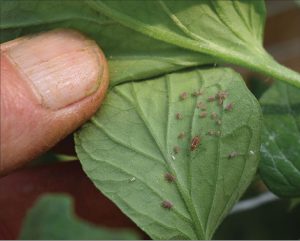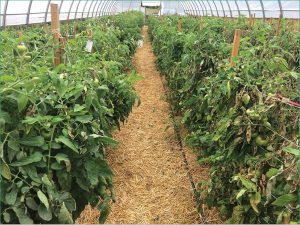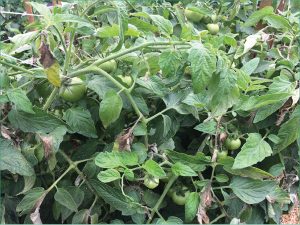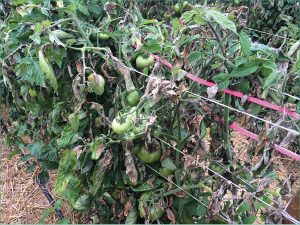
As many of you may have noticed, we missed the Summer issue of this publication. The only excuse we have is that we probably initiated too many projects. Trying to deal with a fairly wide array of stress factors, working with new clientele, and participating in our normal field walks … well … the summer raced by. Despite the stress factors, we ended up with some really nice numbers, and several of the projects are discussed in this issue.

In review of this past season, there were several positive things that happened. First, we had the opportunity to greatly enlarge our experience with SiGuard and SiMag 58. Although we did not perform any replicated research projects, we did have quite a few comments from those of you who used the products. Probably one of the best comments was from a nursery in Iowa who used our silicon products to help with insect and disease control. Paraphrasing, he said, “It was pretty much a normal year from insects and disease. I used only SiGuard and SiMag 58 for control of these pressures, no fungicide and no insecticide. Had great control in all respects … very happy.”
I know in my tomato trials I experienced extreme pressure from both aphids and spider mites, as well as some early thrip infestation. I had one row in a late March planted greenhouse, where we compared different tomato varieties. The same project was planted the third week of May in a high tunnel. The balance of both these “houses” were Red Duece tomatoes being grown and managed as “pesticide-free” by the grower.
Comparing my two rows to the rest of the houses, it was interesting to note the difference in insect pressure. I applied SiMag 58 every week, as I had a visible magnesium deficiency as well. Two of the weeks during the later half of the season I replaced the SiMag with SiGuard simply because I felt I needed a little stronger application of silicon. Although I had continual pressure, especially from aphids, there was noticeably lower numbers in my two rows then the other untreated rows in the houses. Overall, I was impressed.
Several times I could see the leaf coloration improve from the magnesium in SiMag 58, and in two instances this change took place in less than a day. As stated, I had noticeably fewer aphids, and this became even more noticeable once I realized that in order to establish the silicon “protective shield” it was necessary to cover virtually all of the foliage with the spray. In other words, to really “paint” the plant.

In late September, I also used a new product that we will release this coming season. At this time we call it Insect-X-Citer, and it’s comprised of a variety of essential plant oils and surfactants. Although it was fairly late in the season, I ensured a good spray coverage and the majority of the aphids were actually killed. I never had much of a problem after that particular spray. Insect-X-citer was also used by a number of our Hutterite growers with good success. Another very interesting observation, which we will add to the list of positive items to come from the work this season, is illustrated in these three photos from the high tunnel tomato project. Late blight showed up in early September, and the center photo shows the aisle between my variety trial (right half of the phot) and the growers tomatoes (left side). As was mentioned, I was applying foliar nutrient and silicon at least once per week.


The variety in the forefront of the left row (my trial) is Red Deuce, as is all of the grower’s tomatoes in the left row. Although we can’t make a definitive statement as to why late blight affected the non-foliar tomatoes as negatively as it did, and was only showing slight damage on ours, it’s obvious that there is a significant difference. Perhaps it was the silicon that was part of the foliar applications; perhaps it was simply that the foliar treated plants had more “energy” and was not as susceptible to the disease. Regardless of the reasons why, this was a contributing factor as to why the Red Deuce tomatoes in our row significantly out yielded what I refer to as the control (Red Deuce with no foliars). (This data is available here).
It will be interesting to do further research on this, and visit with pathologists as to their thoughts. No doubt they can add some interesting insight.
